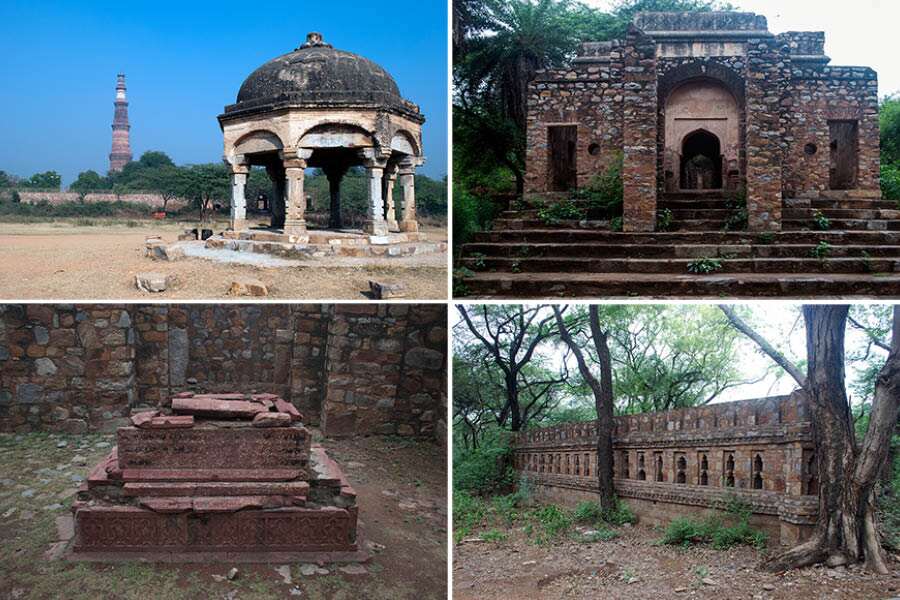Two strange stepped pyramid-like structures stand near the existing gate of the Qutub Minar complex and from there, an almost invisible trails leads south to an undulating scrubland housing over 70 archaeological monuments.
The monuments span over a period of 1,000 years, starting from pre-Islamic days to the late-Mughal period. The structures comprise tombs, mosques, stepwells, fortification walls and even ruined masonry totally covered with vegetation. This is the Mehrauli Archaeological Park, a 200-acre of urban green cover, with a dash of history, right in the heart of Delhi.
The two ziggurats
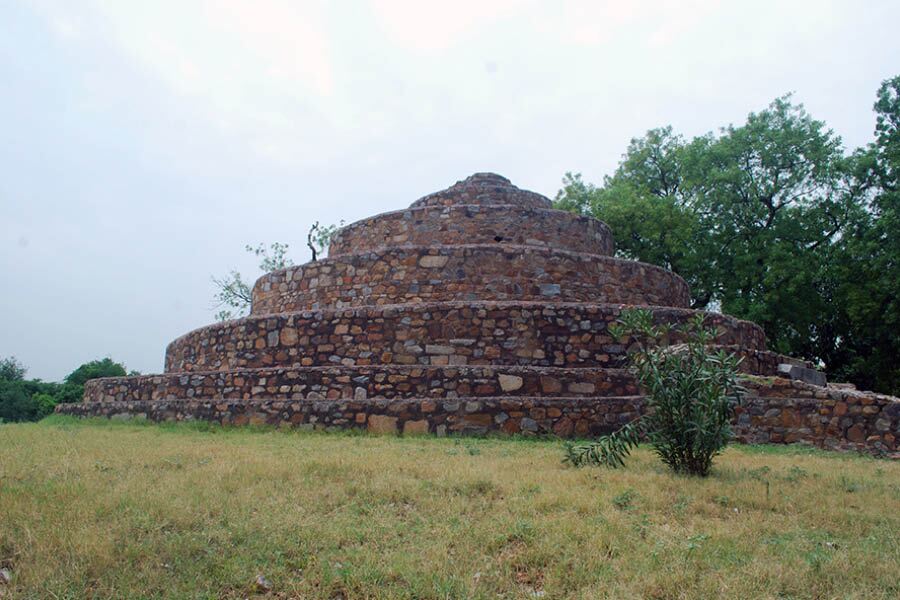
One of the ziggurats built by Thomas Metcalfe who spent forty years of his life in Delhi from 1813
These are the two stepped pyramid-like structures that stand near the exit gate of the Qutub Minar Complex. Known as ziggurats, this stepped pyramid structures originate from Mesopotamia. Delhi seems to be the last place to house these strange structures. But Delhi does have its share of Mesopotamia and are the brainchild of the eccentric British officer, Thomas Metcalfe. He arrived in Delhi in 1813 and spent the remaining 40 years of his life in the city. The ziggurats were built by him in the 1830s. These were constructed out of fallen scattered masonry collected from the neighbourhood.
Quli Khan’s Tomb (Metcalfe’s Dilkhusha)

The interior has beautiful frescoes in bright shades of blue
The zig-zag dirt trail from the ziggurats heads southwards and leads to a domed structure housing the mortal remains of Quli Khan, son of Maham Anga, foster mother of Akbar. The tomb was later converted into a pleasure house by Metcalfe, who turned the entire area into a pleasure garden with the two ziggurats marking the northern end.
Metcalfe renamed it Dilkhusha inspiring William Dalrymple to write: “To the south of Delhi, Metcalfe established a second country house, ‘Dilkhusha’ (Delight of the Heart), in a converted octagonal Mughal tomb near Mehrauli ….a Mughal garden – a four-part char bagh – was laid out in the front of the tomb.”
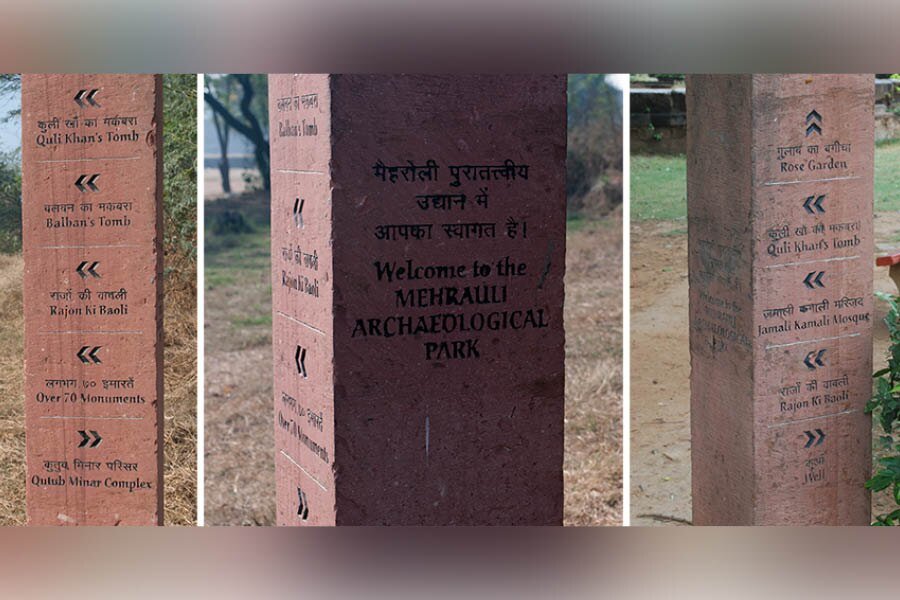
Direction markers inside Mehrauli Archaeological Park
Today, the huge single-domed structure rises above the tree line of the wooded surrounding with the Qutub Minar towering above it on the northern side. The interior has beautiful frescoes in bright shades of blue. Several of structures of Metcalfe’s Dilkhusha still stands to this day. This includes a stable, a boat house and couple of chhatris.
Jamali Kamali Masjid

The five-arched mosque with a single dome has a beautiful sandstone finish
Quli Khan’s Tomb is situated on an elevated ground. A set of stairs on the eastern side of the tomb leads to the level ground and a right turn leads to the Jamali Kamali Masjid. The five-arched mosque with a single dome has a beautiful sandstone finish. North of the mosque lies a small flat-roofed ornate structure housing the remains of Jamali and Kamali. Jamali was a saint and poet in the court of Sikander Lodi (reign: 1489-1517) but nothing is known about Kamali.
Balban’s Tomb
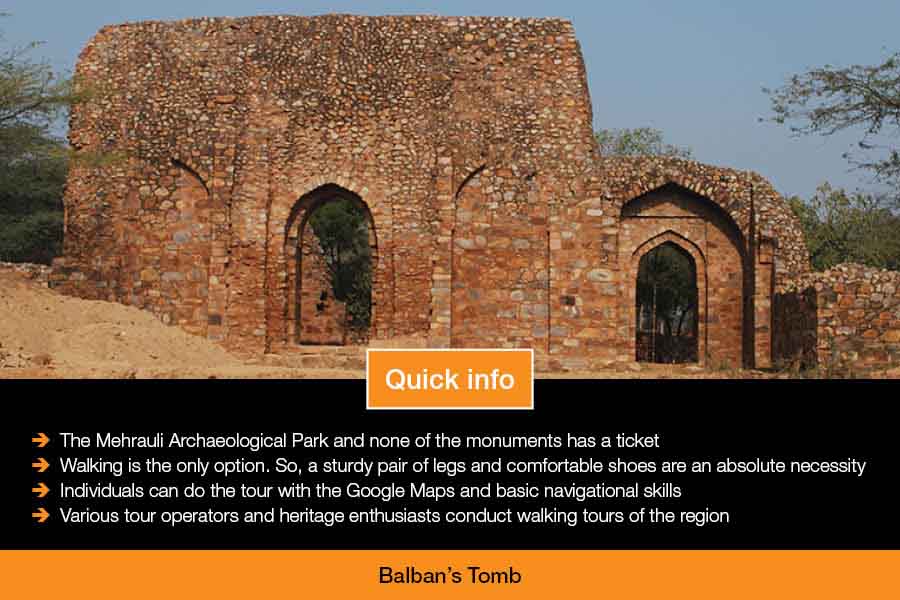
Next to the tomb lies a beautiful red sandstone tomb inscribed with flowing Persian calligraphy
Little east of the Jamali Kamali Mosque lies the tomb of Ghiyas-ud-din Balban (reign:1266-87), the ninth and the last major ruler of the slave dynasty. The box-like tomb is made of rubble masonry. It is not at all impressive but what makes the tomb unique is that it houses the first true arch and dome of the subcontinent. Prior to Balban’s tomb, Iltutmish’s tomb also has arches and dome but they were corbeled in nature.
Sadly, the sub-continent’s first dome has long collapsed but the arches are visible to this day. Next to the tomb lies a beautiful red sandstone tomb inscribed with flowing Persian calligraphy. It belonged to Muhammad Khan, Balban’s favourite son, who died defending the kingdom from the Mongols. The area between the Balban’s tomb and the Jamali Kamali mosque hosts several ruined structures. Overgrown with vegetation these structures were once part of the citadel of Mehrauli.
Through the undulating terrain

A ‘chattri’ and scattered tombs. There are no paved pathways and only foot trails meander past the thick undergrowth leading to the 70-odd sites of the park
The Ridge, extension of the Aravalli, runs through the centre of Delhi. The Ridge creates several pockets of undulating topography in the heart of the city. Mehrauli happens to one of them. This topography, along with the scrubland, add a dash of adventure to the tourist visiting Mehrauli Archaeological Park.
There are no paved pathways and only foot trails meander past the thick undergrowth leading to the 70-odd sites of the park. Occasional direction pillars do help in finding the route but they are located far and wide. But this adds to the adventure and the visitor does enjoy the thrill of exploring the hidden wonders of history.
Rajon ki Baoli
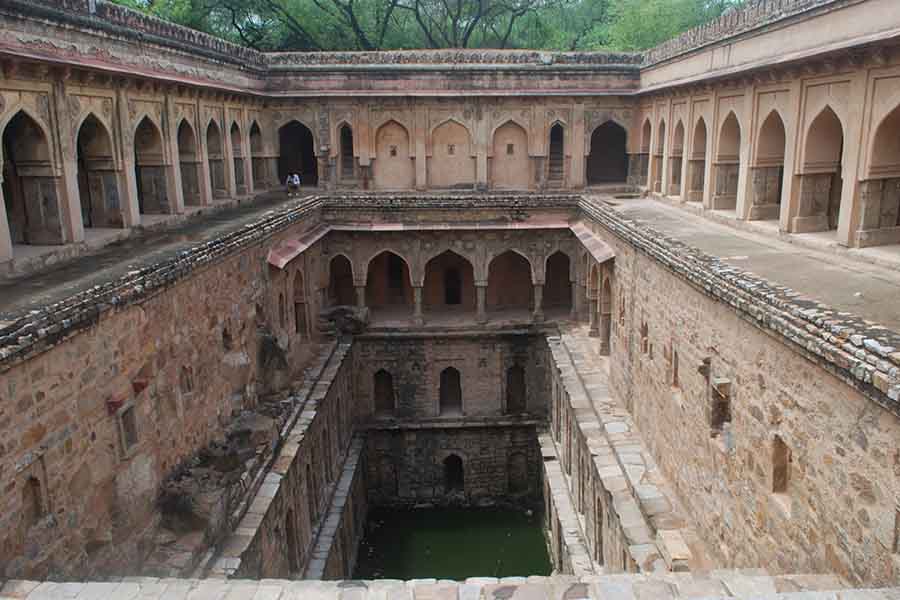
The ‘baoli’ is topped with a mosque and in front of it stands a ‘chhatri’
A long walk through the unmarked trail leads to Rajon ki Baoli. Baolis are stepwells and are quiet common in the arid landscape of Delhi. Rajon ki Baoli happens to be one of the largest and the ornate baolis of Delhi. The four-tiered subterranean structure comprises a long flight of stairs descending to the water level. Each of the four tiers has its share of arches and passageways.
The baoli is topped with a mosque and in front of it stands a chhatri. The stepwell is built by Daulat Khan during the reign of Sikandar Lodhi (reign: 1489-1517). During the 20th century, the baoli served as a residence of the masons and hence, the name ‘Rajon’. The area near Rajon ki Baoli houses several graves and a few chhatris. They are covered with a thick layer of vegetation and are not very accessible.
Gandhak ki Baoli
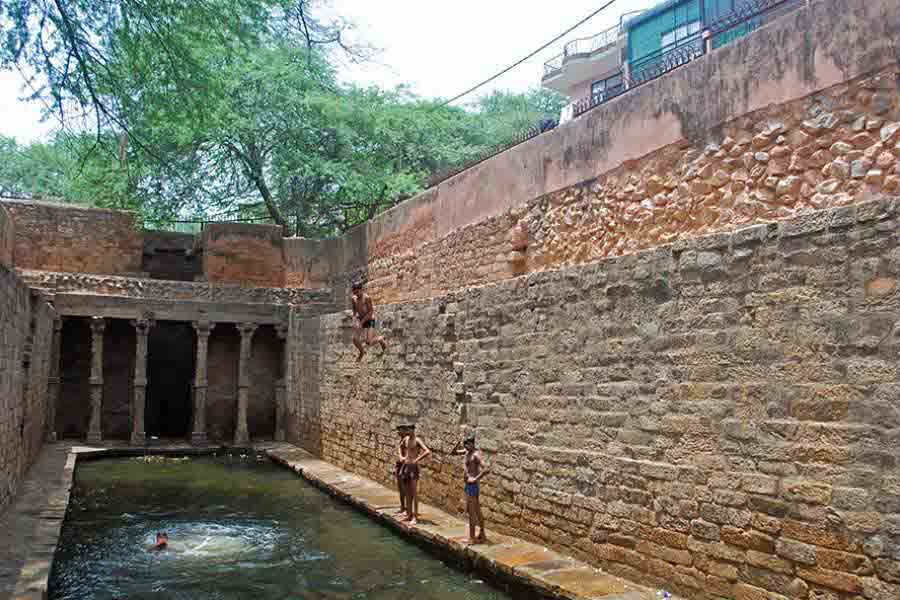
The stepwell with sulphur-rich water is located on the right side of the road
Beyond Rajon ki Baoli, the trail meanders west past a few tombs and finally leads to the paved road. A few steps to the north along the paved road leads to the Gandhak ki Baoli. The stepwell with sulphur-rich water is located on the right side of the road. It lacks the magnitude and grace of his neighbouring counterpart. This small baoli was constructed by Iltutmish (reign: 1296-1316) for his patron saint Hazarat Qutbuddin Bakhtiyar Kaki. According to legend, the area at that time had acute water shortage and the stepwell was constructed to provide water to the Sufi saint.
World War I Plaque

The outer walls carry a plaque in remembrance of the local men who laid their lives fighting for the British in the World War I
The Gandhak ki Baoli is officially the last monument of the Mehrauli Archaeological Park. From there, the road heads north towards the Mehruli crossing. Just before the crossing on the left is the Mehrauli Health Centre, an unlikely place for tourists. Interestingly, the health centre is housed in a pre-Mughal tomb complex. Sadly, the re-use has wiped out centuries of history. But the outer walls carry a plaque in remembrance of the local men who laid their lives fighting for the British in the World War I.
Adam Khan’s Tomb (Bhulbhulia)
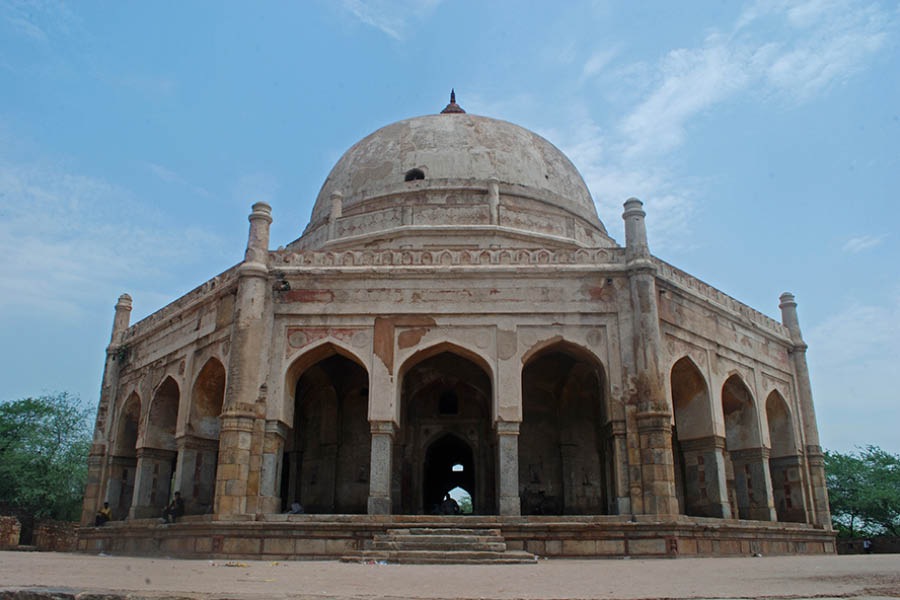
Adam Khan has notorious for his cruelty and was never in the good books of Akbar
A few yards to the north of the health clinic is the Mehrauli crossing, which is dominated by the massive octagonal tomb of Adam Khan. Adam Khan was the brother of Quli Khan and son of Maham Anga, Akbar’s foster mother. Adam Khan has notorious for his cruelty and was never in the good books of Akbar.
Unhappy with Adam Khan’s misbehaviour, Akbar had him executed by throwing him from the ramparts of Agra Fort. Four years later, Maham Anga also died and strangely Akbar commissioned a huge tomb for the mother and son duo. Today, the massive tomb overlooks the busy crossing of Mehrauli in south Delhi. It is commonly known as Bhulbhulia (labyrinth) as visitors are said to lose their way in the inside of the tomb. But it is something very hard to believe.
